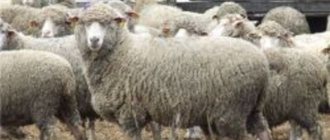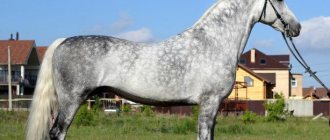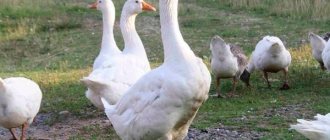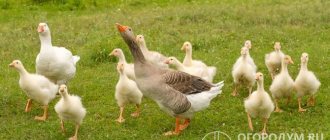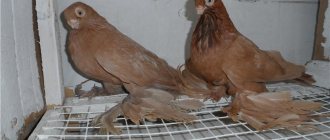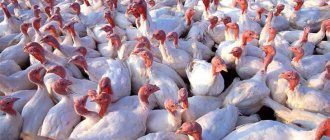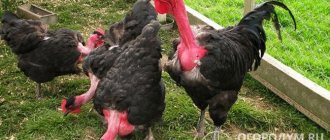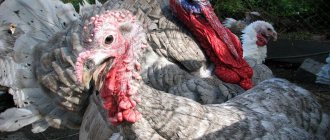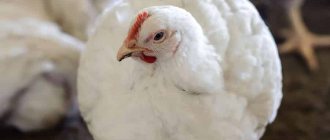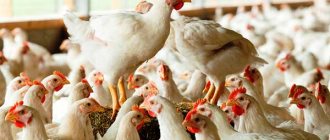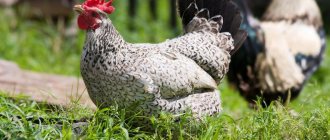Home / Beekeeper's Guide / Carpathian bee
Reading the article will take 8 minutes
- 5
- 4
- 3
- 2
- 1
( 6
votes, average:
4.2 out of 5)
Share this article with your beekeeper friends:
The Carpathian breed is one of those about which not much is known:
- It was listed as endangered in 1961 when its remains were discovered in the Carpathian Mountains;
- She underwent acclimatization in a difficult mountain climate with cold rains and varying levels of precipitation;
- On its basis, many intra-breed types have been created;
- Quickly navigates extreme living conditions and after transportation to other regions;
- These bees are well adapted to life on mountain plateaus and plains, in low mountains.
Czech scientists first started talking about the distinctive hardy, unpretentious and peace-loving breed in the 1920s.
Origin of the Carpathian bee breed
Among scientists there are mixed opinions regarding the origin of the Carpathian bees.
Some researchers take the position that these insects are a subspecies of the Alpine carnica, while others claim that their ancestors are Ukrainian steppe breeds. The only correct thing is that carpathians have distinctive features of the 2 mentioned populations. It is believed that the rock was formed millions of years ago, so theories about its artificial origin are not common. Over a long period of time, bees adapted to mountain living conditions, which influenced the formation of strong immunity and endurance.
Despite the fact that residents of individual Carpathian settlements had been breeding insects for centuries, no one had heard of the breed in the scientific community until the 20th century. Only in the 20s. last century, the first mentions of the hardy and friendly nature of Transcarpathian honey plants appeared in beekeeping newspapers and magazines from the Czech Republic. After the end of World War II, when Transcarpathia became part of the Ukrainian SSR, Soviet scientists became interested in the breed.
In the 1960s experts began to work on improving the breed, trying to obtain the most productive within-breed individuals. Many studies ended successfully, so the Vuchkovsky variety of carpathians was soon bred.
After some time, breeders introduced other inbreeding types:
- Hoverla.
- Synevir.
- Rakhovsky.
Since the experiments were carried out in the mountains, specialists were able to create isolated conditions for apiary farms. As a result, they were able to achieve maximum purity of the new varieties.
How to deal with wax moths
Carpathian bees are not very resistant to this disease. For beekeepers, moths are perhaps their worst enemy. After all, this is the only insect that can completely digest wax and similar products. Female moths lay eggs in all crevices of the hive and in the honeycombs. At the same time, they envelop the entire bee brood in a dense web. As a result, the Carpathians simply abandon the infected honeycombs and begin to build new ones.
They fight wax moths using special mite-catching devices. You can scare this pest away from your hives by placing brooms of wormwood, mint and wild rosemary around them. It is easy to prevent the moth from spreading to other colonies by digging a ditch around the infested hive and filling it with water.
Thus, despite minor shortcomings, judging by the reviews of beekeepers, the Carpathian bee can be safely classified as one of the best breeds today. Breeding these insects is not difficult. In terms of honey collection, they are much superior to most other breeds. The profitability of apiaries with Carpathian bees and the high rate of insect reproduction determines the profitability.
Characteristics and features of the breed
There is debate in scientific circles about the origin of carpathians. One group believes that they became an offshoot of the Krajina bees. Other scientists find evidence of kinship with Ukrainian insects. The bee, called the “Carpathian”, shows similarities with these breeds, but is not without its own distinctive qualities.
In the 60s of the twentieth century, Ukrainian breeders decided to develop varieties that were highly productive. They also became interested in breeding in the Caucasus, Kazakhstan, and Russia. The experiments were implemented successfully, so branches appeared within the breed: Vuchkovskaya, Kolochavskaya, Rakhovskaya, Maikopskaya lines. Popular breed species are Hoverla, Synevyr.
The natural habitat of this species of bees is the Carpathian Mountains, which have an unstable climate. It rains frequently in this region, with cold winters followed by short summers. Harsh conditions meant that insects had to adapt.
Distinctive features of the breed:
- Bees work under different external conditions. They do not stop flying out to collect honey during rain, cold weather, or cloudy weather.
- Prolonged darkening of the uterus in the fall. This leads to rapid growth of the bee colony until the winter season. Feed reserves are used sparingly.
- Winter resistance. After the end of the cold weather, death is almost not observed. Carpathian bees are hardy and resistant to different weather conditions, which is why they are also bred in Siberia.
- Rapid growth and strength gain of the family in the spring. For the first bribe, Carpathians fly out 2-3 days earlier than representatives of other breeds.
- Collecting nectar from different plants. This feature is important, since the bees do not get hung up on the main honey plants. They are able to quickly switch between plants, so honey collection continues when unfavorable conditions occur.
- Construction of foundation. One bee colony creates up to 20 honeycomb frames per season.
- Lack of tendency to swarm. Bee colonies rarely reach this state. If the formation of a swarm begins, it is easy to slow it down in the first stages.
- Good health. Living in difficult weather conditions has increased the resistance of insects to major bee diseases.
The listed characteristics are why beekeepers love Carpathian bees. This breed is distinguished by its calm, friendly character, which allows it to work without protective equipment.
Early departure, fast shifting, efficient operation on legumes
- Foragers fly out for bribes earlier than other breeds (Ukrainian steppe, Italian, Caucasian) by 3-4 days, or even a week;
- It is advisable to use them for pollinating rapeseed and acacia: they master bribes from the very beginning of flowering, having previously developed sufficient strength;
- As experiments have shown, colonies make a good start in the spring: a hive where bees nurse 10–12 frames in the spring works productively already in May on rapeseed, and on acacia in June;
- Foragers quickly switch from one honey plant to another;
- The workday of the pickers begins at 5.30 am and can end at 10 pm;
- Carpathian grass is exported to both large industrial and small areas, including mixed-grass natural meadows;
- Bees behave calmly when migrating. This allows us to recommend the breed for pollination of several areas, including legumes;
- Honey is stored in extensions and upper cases, not in the nesting part;
- A long proboscis is the reason for high pollination of clover, alfalfa, and sainfoin (pickers are second only to gray mountain Caucasians in terms of the length of their proboscis);
- The weaker the honey flow, the higher the likelihood of swarming.
Queen bee Carpathian
Queen bees of the Carpathian breed are highly productive. The average number of eggs laid per day is 1800. The increase in the indicator is carried out by beekeepers, who, through selection and selection, improve the biological properties of their “wards”. They achieve a daily result of 2500–3000 eggs.
A distinctive feature is the replacement of the queen bee without damage to the colony. Often two queens coexist quietly in the same nest. This quality reduces constant control by the beekeeper and the likelihood of orphanhood.
Queen bee Carpathian
Queens are distinguished by high fertility along with the ability to feed a large family. Therefore, the Carpathian breed stands out among other bees due to the possibility of breeding in areas with an unfavorable climate.
How does mating happen?
The queen bee mates at an altitude of about 30 meters, where thermal air currents are present. Fertilization of the uterus is the task of drones. In flight, she connects with several drones, filling her sperm containers with the males' material.
The act of mating occurs at fairly high flight speeds. The drone must accurately determine the location of the female and recognize the open vaginal opening. He then shoots his inseminating organ into her body, where it locks and remains. At this moment the drone dies.
The inseminating organ, torn from his body, remains in the female's organ. The drone's work ends with the transfer of genetic information.
The female repeats the action several times until she fills her sperm containers. The contents received should be enough for her entire life. There are no more wedding flights.
Appearance and performance
The dimensions of carpathians stand out noticeably among other breeds, which classifies them as large insects. Average parameters:
- width of the upper half rings of the abdomen – 4.6–5.0 mm;
- weight of working insects – 100–120 mg;
- the weight of the queen bee after emerging from the queen cells is 200–220 mg, during the egg-laying phase – 280–310 mg;
- weight of producers (drones) – 200–230 mg;
- proboscis length – 6.8–7.0 mm.
Numerous representatives of the family - worker bees - are gray in color with silver splashes on the abdomen. There are no yellow tints. Drones are grayish-brown in color, queen bees are dark, cherry or black in color.
The productivity of carpathians led to the spread of the breed among beekeepers. One strong, healthy and hardy bee colony produces up to 60 kg of honey per season. If technologies that increase productivity are used in the apiary, the amount increases to 70–80 kg.
General characteristics of the Carpathian bee breed
The Carpathian bee was born in rather difficult climatic conditions. The Carpathians, with their low mountainousness, are characterized by sudden changes in weather: there are prolonged rains, frosts, and short summers. For bees, these atmospheric characteristics are considered quite extreme. However, the local breed has adapted to the weather and learned to withstand it. The beauty of Carpathian workers is that they work in any bad weather, even on cold days and during light rain.
Experts still cannot say with certainty when exactly this breed appeared. It is only known that it is several million years old, although it gained popularity among beekeepers only towards the end of the 20th century.
The queens of these insects have the ability to worm abundantly in the autumn, so the colonies are populous. Bees tolerate the winter well and use their reserves sparingly. According to its characteristics, the breed is suitable for cultivation in northern regions, for example, in Siberia. In the spring, insects develop quickly and come into force by the time acacia and rapeseed bloom. Flights take place several days earlier than other breeds of bees. Carpathians are also distinguished by their extensive use of forbs. Bees pay attention to many plants and do not focus only on honey plants. They have a long proboscis, which helps them cope with even the deepest deposits of nectar. Insects have good construction skills. During a season, a family can produce up to twenty frames with honeycombs. In summer the honey print is mostly dry, in other seasons it is mixed. Another feature is low swarming. According to statistics, about 5% of bee families swarm. It will not be difficult for an experienced beekeeper to stop this process if done in the early stages.
Swarming - or in other words, the “nuptial flight” of insects - in an apiary can lead to losses, since some of the bees are lost. Beekeepers prefer to limit and control this process.
Carpathians are insects with good health; they are little susceptible to such specific diseases as varroatosis, ascopherosis, nosematosis and bacterial infections. These are calm individuals; some specialists work with them even without protective equipment.
Appearance
This breed can be recognized by its gray and brown color without a hint of yellow. The drones of carpathians are a darker, richer brown color, the queens are from black to cherry in color. The abdomen with the anterior part of the tergite has a dull silvery edge, 4.8 mm wide. On average, bees of this breed weigh 110 mg. The uterus can reach 185 mg, and during the period of egg production 260-302 mg, reaching three centimeters in size. The proboscis of carpathians is long - from 6.6 to 7 mm.
The only subspecies among the carpathians that is yellow is the Maikop.
Selection
Among breeders, this breed is considered especially valuable; it is cared for and preserved. There are nature reserves in Transcarpathia and several other territories where they exclusively breed these insects, and the import of any other individuals is prohibited. Today there are about 10 lines of new subspecies. Among them, the most widespread are:
- Vuchkovskaya. One of the most popular types. These are bees with a high level of honey production.
- Kolochavskaya. Compared to the original individuals, bees of this subspecies have enlarged wings and hooks.
- Hoverla. This is a combination of the two previous subspecies, which combines the characteristics of both
- Rakhovskaya. It stands out for its dull gray color, characteristics similar to the Hoverla line.
- Synevir. The youngest subspecies, whose characteristics are still being studied.
Breeders continue to work on developing new lines and improving Carpathian bees. But, of course, the purebred breed is of particular value for breeding.
Productive Features
The breed is distinguished among others because of its good productivity. In one season, Carpathians are capable of collecting about 40-50 kg of honey, and if the weather conditions were good and all the rules for maintaining hives were followed, the collection could increase to 80 kg. This level of productivity is possible precisely because bees do not fixate on one plant, but fly around many herbs, even in unfavorable climatic conditions. The breed is considered highly productive in wax production.
Features of behavior
Carpathian bees are peaceful and do not show aggression. To inspect their homes, most often no smoke is required; the inhabitants of the hives calmly work on the frames and pay almost no attention to humans. Aggression from the carpathian moth can be caused by the attack of parasites, such as wax moths, on the hives. Carpathian bees are independent; their breeding does not require special human efforts or special devices.
They get involved in collecting activities early. The participation of young bees allows the colony to increase its daily forage collection. This is especially important when the average life expectancy of bees is reduced for some reason.
In greenhouse vegetable growing, the life of bees is reduced to 20-22 days.
Scientist I. Levchenko also named the ability to collect nectar with a low sugar content as an important behavioral feature of this breed. This is due to the climatic conditions of their habitat. The influence of the queen in such bee colonies is reduced. In a number of experiments, even when it was removed from the hive, the bees continued to work as if no changes had occurred. Insects work well on abundant bribes - up to 6-8 and even up to 15 kg per day. By right, the common noun for all bees, “workers,” applies to this breed.
Disengagement zones
The homeland of these bees is the Carpathian mountains, but they are successfully bred not only in Ukraine, but also in Russia (including in the northern regions, for example, in Siberia), Belarus (mainly in the southern regions), as well as in some regions Uzbekistan and Kyrgyzstan. The breed is in demand among European beekeepers, for example, in Poland or the Czech Republic.
Features of honey collection in the Carpathian breed of bees
Beekeepers prefer this breed because it is able to begin honey collection earlier than others, and young individuals do this. It is the early flight that will allow Carpathian bees to collect a large volume of nectar even under unfavorable conditions. They are able to pollinate plants both in nature and in pavilions. The honey of these bees has a pleasant taste and high quality; it does not contain much sugar. Bees tolerate transportation well, which makes it possible to move hives to distant territories. These insects build honeycombs quickly and provide propolis in small quantities.
Comparison of the Carpathian bee with other species
Each breed has characteristics that make it suitable for beekeepers in certain conditions.
| Breed name | Description |
| Buckfast | Very prolific and disease resistant. |
| Siberian melliferous | Has high aggressiveness. Bees are large in size. They are able to tolerate cold climates well. Resistant to most diseases. Poorly fertile. |
| Karpatki | They tolerate changeable and cold weather well, but are not adapted to life in the northern regions. Large-sized individuals. Aggression is very low. Resistant to the most common diseases and pests, but vulnerable to wax moths. |
| Altai melliferous | This species does not tolerate cold well and is poorly protected from disease. Bee productivity is considered average. |
| Uzbek view | Prone to forming swarms and moderately aggressive. The queen lays up to 2000 eggs per day, which ensures rapid growth of the family size. |
| Ural bees | They are very clean. They have a tendency to form swarms. The queens are fertile - they lay up to 2000 eggs every day. Insects tolerate different climatic conditions well and, if necessary, can easily adapt. |
Carpathian bees are widely popular in Russia, Belarus, Poland, Ukraine and European countries.
Content Features
Most experts note that the Carpathian breed is well suited even for novice beekeepers, however, to successfully keep and breed such bees, you should pay attention to some features of their maintenance.
Conditions of detention
After purchasing the Carpathian bee breed, you should take care of choosing a suitable hive. For this species, a multi-hull hive is most suitable, since such a dwelling is as close as possible to the natural living conditions of bees of the above breed.
Experts recommend making the openings for the exit towards the southeast or southwest. This technique will help insects navigate in time. It is advisable to place the hives themselves in a checkerboard pattern at a distance of at least 2 m from each other. In this case, the bees easily find their home and do not disturb other families. You can also place them in rows.
The Carpathian breed of bees is kept in various conditions:
- in greenhouses;
- pavilions;
- on the street.
Placing hives in natural conditions only works well in temperate climates, but experienced beekeepers have placed bees outdoors in harsher weather conditions.
Nutrition
When choosing a location for installing hives, you should pay attention that there should be honey plants at a distance of up to 2 km. Sites close to the forest are good. The hives can also be placed in a garden where there are many fruit trees.
Additionally, you need to take care of the presence of drinking bowls for insects. Several pieces should be placed in the apiary area. The bees will choose the most suitable place for them to get water, and the remaining drinking bowls can be removed.
For feeding in the spring, use sugar syrup with the addition of acetic acid. To prepare it, mix 1 kg of sugar and 3 g of acid in 1 liter of water. Many beekeepers are also currently using Alimak, which helps insects quickly recover from winter and start working more efficiently. Additionally, various additives containing cobalt are used (for example, Pchelodar).
Wintering
For a good winter, experts recommend fertilizing to stimulate the increase in bee bread for winter and accelerate the spring development of bee colonies. This event should be held in the fall. For feeding, 33% sugar syrup (200 g) is used, to which 2.5% pollen is added.
Carpathian bees tolerate winter well. This factor contributes to the breeding of this breed even in Siberia, since thanks to their productivity, bees are able to provide themselves with the necessary amount of food for the cold season. For successful wintering, Carpathians require about 30 kg of flower honey.
However, in order for insects to winter well, you should regularly inspect their home and, if necessary, replenish the dwindling supply of food.
Additionally, they maintain a suitable humidity level (65-80%). To do this, it is necessary to remove the bees to the winter hut in time. The most suitable period is the beginning of stable frosts.
In the case of breeding in temperate climatic conditions, some features for wintering should be taken into account. If kept in multi-hull hives, it is necessary to remove the upper buildings one by one in the autumn. They are placed on top of the bottom stand, and the bees are shaken off from the frames of the lower body.
First you need to remove the splash bars. The result is a 5mm hole for bees to fly out, ventilation and another hole on the first body. In spring, a lower block is placed below.
Peculiarities of consumption of honey reserves and work of foragers on bribes
Short summers with rain and strong winds are native conditions for Karpatka, so the maximum death of bee colonies during wintering does not exceed 10%.
If the winter is warm, with frequent thaws, the queen begins to sow in February and the colony’s honey consumption increases to 25 kg, compared to 17–18 kg during a cold winter without warming. Karpatka is suitable as a “weekend” apiary: even in conditions of weak and inconsistent honey collection, you can pump out at least 15–20 liters of honey.
If the bees come out of wintering with 10 kg of honey in reserve (3–4 full honey frames), development is more intensive: by May 20 they occupy up to 22–24 frames in the Dadanovsky hive. With this development, layerings are made for sale already in May, the demand for which is higher than in July and later. It is necessary to monitor the number of free combs: when there are not enough frames or sushi for collecting honey, the retinue begins to limit the queen during the period of intensive collection. This soon leads to the wear and tear of the assembly crew and the weakening of the family.
It is difficult to obtain monofloral varieties of honey from Karpatka: it usually works on several varieties of crops at the same time, even if the apiary is exported to a large area of industrial honey plants. It is possible that it was precisely this variety of factors when collecting honey that determined its strong immunity and natural survival. But a beekeeper who has pumped out 15–30 kg of May honey per family (the most expensive, costing up to 10 € per 1 kg) will make a profit at the start of the season.
What do beekeepers advise?
Bee breeding specialists give several useful recommendations for successfully keeping Carpathian bees:
Bee packages
First of all, when choosing bee packages, you need to be especially careful about standard sets, since unverified suppliers can sell completely different bees instead of Carpathian bees. And in this case, insects may turn out to be intolerant, painful, and also have low productivity.
The features of a complete package are:
- availability of feed reserves (about 3 kg);
- worker bees in sufficient numbers (about 15,000 individuals);
- young uterus;
- the number of dead animals should not exceed more than 20 bees.
Experts recommend that novice beekeepers purchase packages from well-established suppliers or from friends.
Wax moth
To combat such a pest, you can use natural remedies that are safe for bee colonies. Often, a repellent method is used using various odors that moths cannot tolerate.
For this, mint, garlic, hops, and wormwood are used. These plants can be used either alternately or in compositions. There are also various chemical treatment methods, such as vinegar or paradichlorobenzene. The drugs Biosafe and Entobacterin have proven themselves well.
Anti-swarming
Although the Carpathian breed of bees is practically not prone to swarming, it does happen. Therefore, take measures against swarming in time. To do this you need:
- create good ventilation and reduce exposure to sunlight;
- separate young and mature bees from the same family and combine them with the main families when nectar occurs;
- use multi-hull hives.
Stopping oviposition in the fall, how Carpathian queens are hatched in Ukraine
Due to the fact that the queen carpathian sows until late autumn, oviposition can be forcibly stopped by starting intensive ventilation and cooling of the nest 2-3 weeks before the desired date.
For this:
- you can remove the bottom of the hive by installing an anti-varroa mesh;
- remove canvases;
- open the tapholes to the maximum;
- expand the distance between streets.
But there is a danger: when the queen of the karpatka is sent “without acceleration” at this time (i.e., the tubes have not received maximum development) or the period of her oviposition is suspended for a week, it will become difficult to grow a good family in the future.
Ukrainian scientific beekeepers select the best queens of Karpatka by genotype. Then they are mated in the mountains or instrumentally with selected drones.
The quality of the offspring is checked by siblings (brothers and sisters) in isolated apiaries. Queen cells are rejected by listening to them on the 10–11th day of development, queens are rejected by assessing the width of tergites 3 and sternites, and mass. The queens are changed after 2 years, selecting queen cells from families where the combs are filled with honey and beebread, and the larvae literally swim in royal jelly. If the queen was bred during a period of intensive breeding, its quality, even from a strong family, is much worse.
Advantages and disadvantages
In the course of many years of work with Carpathian bees, beekeepers have identified a number of important advantages that this breed has:
- Rapid development of the family in early spring.
- High productivity when collecting nectar from different honey plants.
- Possibility of collecting bribes with a small percentage of sugar content.
- Staying active in adverse weather conditions.
- Low degree of roaming.
- Synthesis of a large amount of wax without affecting honey productivity.
- High-quality cleaning of the hive, which relieves the beekeeper from a number of inconveniences associated with maintaining bee houses.
- Good spatial orientation, which allows insects to pollinate even greenhouse crops.
- Resistance to diseases and parasites.
- Minimal aggressiveness.
But despite the wide list of positive aspects, representatives of the breed also have disadvantages. They boil down to:
- Probability of stealing honey from other families.
- Low efficiency of propolis production.
- Passive attitude towards wax moths.
In addition, Carpathian bees can become aggressive when bred in conditions that differ from their usual ones.
Key differences between Karpatka and Karnika
Is Karnika better than Karpatka or not? Let's look at the objective facts regarding these two breeds:
- Carpathians generally winter better than Karniki;
- Carpathians are more resistant to diseases;
- for a bribe, Karpatka begins to fly out even in relatively negative weather conditions (even at temperatures from 6 degrees);
- they also make better use of weak bribes against the background of low sugar content in nectar;
- when keeping Karpatki there is a high risk of theft, they protect their nest less well;
- they are less able to resist diseases such as wax moths, and better able to resist varroatosis, compared to Karniki;
- Carpathians are more roaming;
- Karnika collects honeydew honey better and is more resistant to honeydew toxicosis than others.
However, despite the debate over which of the two breeds is better, they are still related and the differences between them are not that significant. Many experts do not recognize them as different at all, and consider Karpatka to be a variety of Karnika.
How to distinguish from other varieties
The Carpathian bee has been bred by beekeepers since ancient times. When and how it was bred is not known for certain. Some scientists consider this bee to be a branch of the carnica, others attribute it to one of the varieties of the Ukrainian steppe. Only one thing is certain: these insects have been living in the Carpathians for thousands of years. The breed is most widespread in western Ukraine, in the steppe and mountainous regions.
The gray color of the body is what primarily characterizes the Carpathian bee. The photo below clearly demonstrates its somewhat unusual appearance. In the front part of the abdomen of this bee there is a silvery edge. The color of the queen of the Carpathian breed can vary from dark gray to cherry.
This variety received good reviews from beekeepers, among other things, for its long proboscis (6.2-7 mm), which allows it to collect nectar even from legumes. This breed is slightly larger in size than the Carnica. 110 mg - approximately how much a working adult Carpathian bee weighs. The uterus of this variety is also not too large. Its weight can reach 185-205 mg.
Tips for breeding at home
Professional beekeepers give the following useful recommendations to those wishing to keep Carpathian bees:
- When buying a bee colony, you need to inspect the queen. She will be larger than just working females, and will have an elongated abdomen, not covered by wings. It moves somewhat slowly, and, as a rule, is located in the center of the nest with combs containing eggs. You should pay attention to the following - the wings, limbs and abdomen must be without damage.
- The quality of the brood should be assessed - the queen must produce eggs in each cell. If there are empty cells, such a uterus will need to be replaced.
- Be sure to install a fence for the apiary at least 1.5 m high.
- The location for the hives should not be near water bodies or damp. Industrial areas should also be avoided.
- Selection of hives. It is preferable to purchase single pieces of evidence that can be folded. You should also pay attention to protection from low temperatures. Snow should not stick to children in winter. The inside of the hives should be clean and there should be plenty of food.
- It is better to place the apiary near honey plants that bloom early, so that the bees in the spring have quick access to a food source.
- In the spring, you need to more carefully inspect the hive to control the frames. They need to be added or removed as needed. After collecting honey in the spring, you need to create layering and remove the drone brood - this will give more space for construction.
- The hives should be located in a quiet place, away from paths, country roads and highways. Bees do not tolerate noise or loud noises well, and this can force them to leave the hive.
Also learn about the external and internal structure of a bee.
The Carpathian breed of bees appeared not so long ago, but has already become popular due to a considerable number of positive features for beekeepers.
Productivity indicators
In terms of honey production, according to most beekeepers, this breed is significantly superior to many others. The average productivity is 40 kg per family per year. At the same time, the honey of Carpathian bees itself has very good taste characteristics. For some particularly strong families, with good bribes, the product yield can reach 80 kg per year. These bees produce propolis in very small quantities.
At the same time, bees can make a lot of wax in a short period of time. As beekeepers note, Carpathian bees build honeycombs much faster than most other breeds.
Breeding
You can quickly organize a new apiary or a young family in a short time using the batch method of bee breeding. The batch bee colony immediately creates a new nest and stores food.
The cost of purchasing the package pays off already in 1 year, since by the beginning of the honey harvest the family is ready and able to produce marketable honey. Carpathian bee packages are an already formed swarm. By spring flowering, bees have time to build a nest, raise brood and lay new ones. Pack families do not swarm due to young fertile queens. Caring for the carpathian is quite simple. Packages are only available for purchase in the spring.
Experienced beekeepers recommend that young beekeepers start with this breed. Bees are unpretentious in their care and have universal living conditions. Carpathian honey has low sugar content, therefore it is healthy and tasty. Bees justify their expenses quickly.
Advantages and disadvantages of bees
The Carpathian bee is popular among experienced beekeepers for its positive characteristics. These include:
- rapid creation and development of a family in the spring;
- works in adverse weather conditions;
- unpretentiousness when choosing honey plants;
- collecting nectar with a small sugar content;
- low tendency to swarm;
- lack of aggression;
- accuracy in the construction of honeycombs;
- high fertility of the uterus;
- increased resistance to disease;
- the ability to survive in adverse conditions.
However, insects have not only advantages, but also disadvantages. Negative signs include:
- low volume of propolis production;
- sometimes prone to theft;
- are not able to resist wax moths - adult butterflies and larvae.
There are much fewer cons, so the pros outweigh. A large number of positive aspects make the Carpathian bee popular among beginners and experienced beekeepers.
Disadvantages of the breed, bee nurseries
- A significant disadvantage of the breed is that it is affected by wax moths (caterpillars and butterflies that consume honey gnaw through the honeycombs);
- With a weak bribe - some tendency to theft;
- Carpathians protect the hive well, but collect little pollen, so they are not suitable for industrial collection;
- Scientists have come to the conclusion that it is best for Karpatka to be in multi-hull hives of the Dadan-Blatt type, with entrances to the southwest or southeast. A distance of 2 m is maintained between Karpatka hives.
Now in Ukraine the breeding zone for pure breeds is officially:
- Transcarpathian region,
- Chernivtsi,
- Ivano-Frankivsk region,
- Lviv region.
There are bee nurseries there and the import of bees of other breeds is prohibited. Mountainous terrain is an excellent condition for isolating types: in the Carpathians there are now many flybills, where the tribal purity of the Carpathians is observed.
What diseases can insects have?
Due to the fact that the original place of life and development of the insect was the Carpathian Mountains, bees are in good health. Nosema is diagnosed in rare cases. Some species are not susceptible to ascopherosis, varrotochus and other bacterial diseases.
Interesting! The larger and stronger the bee colony, the less insects are susceptible to disease, and the better the microclimate is maintained. Young insects develop faster and better.
The Carpathian bee is an insect that beekeepers love. There are different types with distinctive features and positive qualities. With the right approach, even a beginner can handle keeping such a bee.
Sources
- https://101pchela.ru/karpatskaya-poroda-pchel.html
- https://mirpchely.ru/pchelovodstvo/pchely/karpatka
- https://DobryyPasechnik.ru/razvedenie-pchyol/porody/karpatskaya
- https://ferma.expert/pchely/vidy/karpatskaya-poroda-pchel/
- https://FB.ru/article/248230/karpatskie-pchelyi-otzyivyi-foto-harakteristika
- https://GdeKlop.ru/osy-i-pchely/poroda-karpatka/
[collapse]
Disease resistance
The climate of the Carpathian Mountains, which largely influenced the characteristics of insects, endowed them with good health. Some types of “carpathians” are not prone to diseases such as ascopherosis, varrotochus and some bacterial diseases. It is almost impossible to encounter nosematosis in them.
The stronger the family, the easier it is for it to maintain the microclimate in the hive. They do a better job of cleaning the nest and supplying food to the larvae. Young individuals develop faster and begin to work. In terms of disease resistance, “Carpathians” are one of the first places among all honey-bearing species.
